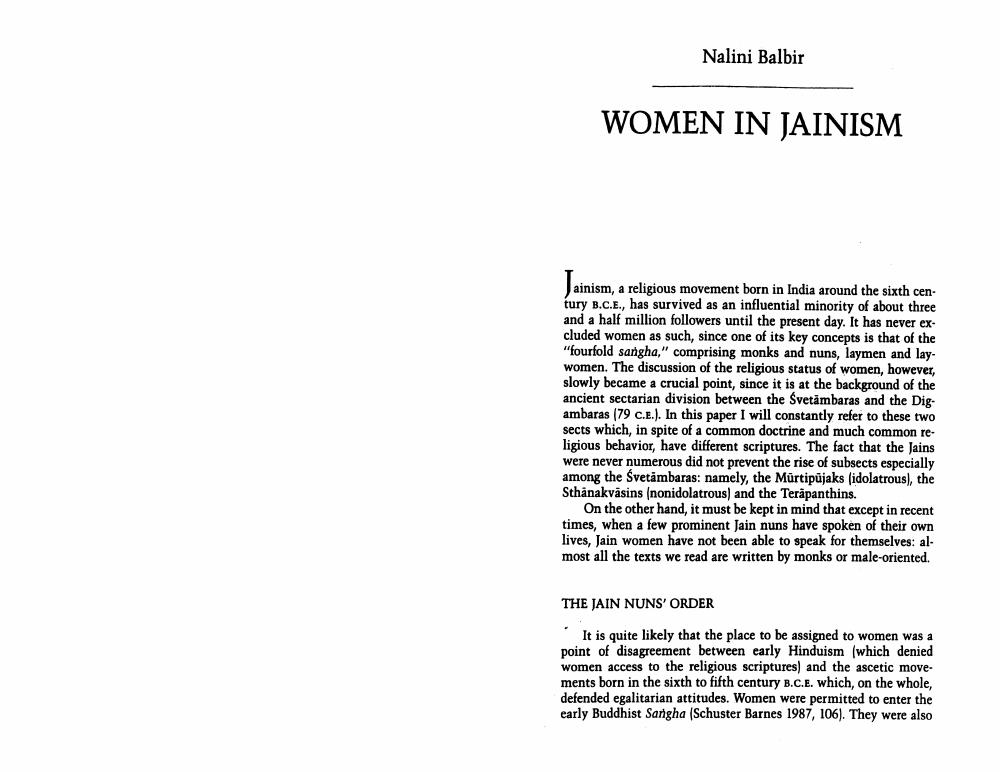Book Title: Women In Jainism Author(s): Nalini Balbir Publisher: Nalini Balbir View full book textPage 1
________________ Nalini Balbir WOMEN IN JAINISM Jainism, a religious movement born in India around the sixth cen. tury B.C.E., has survived as an influential minority of about three and a half million followers until the present day. It has never ex cluded women as such, since one of its key concepts is that of the "fourfold sangha," comprising monks and nuns, laymen and lay. women. The discussion of the religious status of women, however, slowly became a crucial point, since it is at the background of the ancient sectarian division between the Svetämbaras and the Digambaras (79 C.e.). In this paper I will constantly refer to these two sects which, in spite of a common doctrine and much common re ligious behavior, have different scriptures. The fact that the Jains were never numerous did not prevent the rise of subsects especially among the Svetämbaras: namely, the Murtipujaks idolatrous), the Sthanakvasins (nonidolatrous) and the Terapanthins. On the other hand, it must be kept in mind that except in recent times, when a few prominent Jain nuns have spoken of their own lives, Jain women have not been able to speak for themselves: almost all the texts we read are written by monks or male-oriented. THE JAIN NUNS' ORDER It is quite likely that the place to be assigned to women was a point of disagreement between early Hinduism (which denied women access to the religious scriptures) and the ascetic move. ments born in the sixth to fifth century B.C.E. which, on the whole, defended egalitarian attitudes. Women were permitted to enter the early Buddhist Sangha (Schuster Barnes 1987, 106). They were alsoPage Navigation
1 2 3 4 5 6 7 8 9 10 11 12
